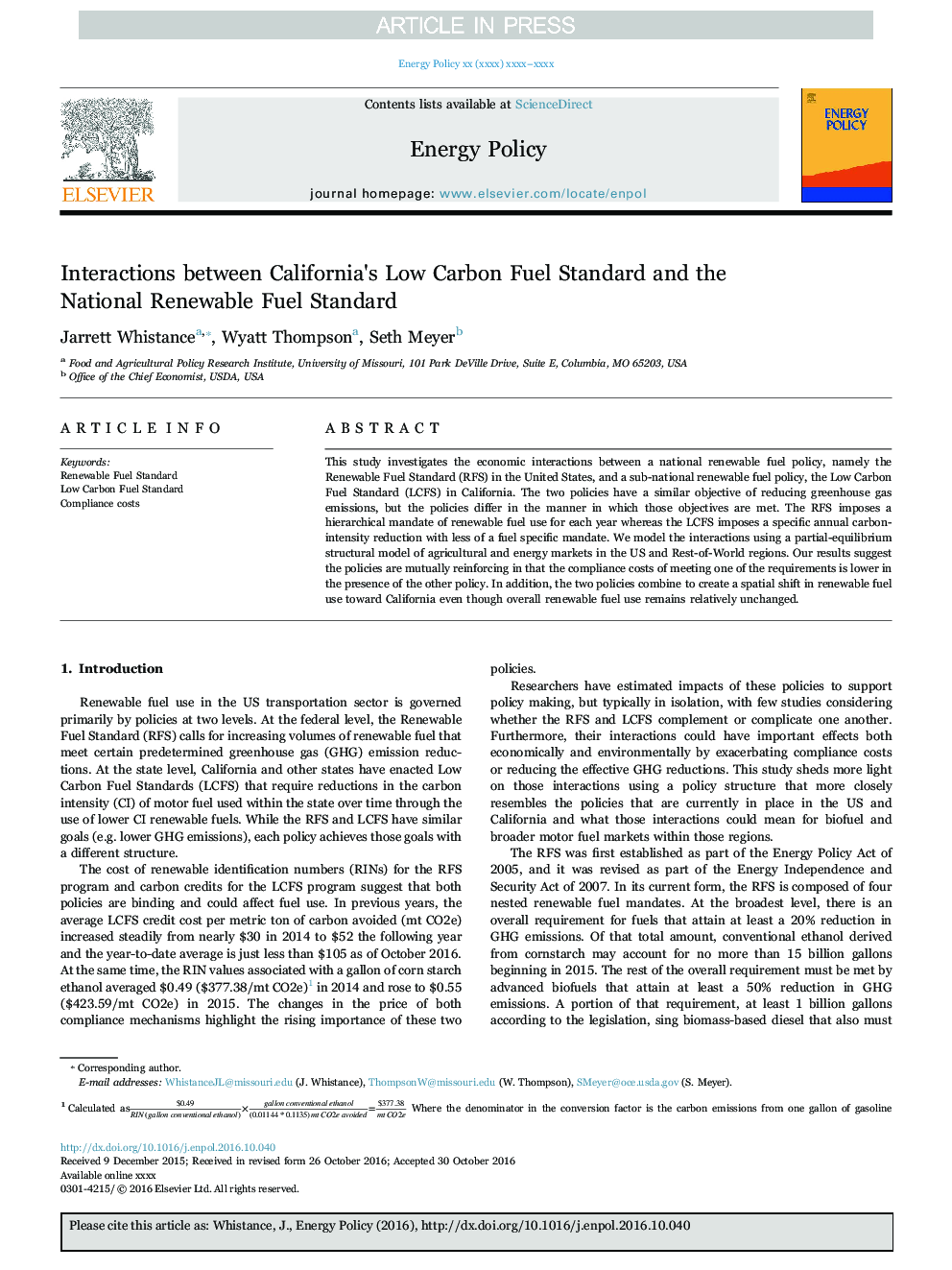| Article ID | Journal | Published Year | Pages | File Type |
|---|---|---|---|---|
| 5105964 | Energy Policy | 2017 | 9 Pages |
Abstract
This study investigates the economic interactions between a national renewable fuel policy, namely the Renewable Fuel Standard (RFS) in the United States, and a sub-national renewable fuel policy, the Low Carbon Fuel Standard (LCFS) in California. The two policies have a similar objective of reducing greenhouse gas emissions, but the policies differ in the manner in which those objectives are met. The RFS imposes a hierarchical mandate of renewable fuel use for each year whereas the LCFS imposes a specific annual carbon-intensity reduction with less of a fuel specific mandate. We model the interactions using a partial-equilibrium structural model of agricultural and energy markets in the US and Rest-of-World regions. Our results suggest the policies are mutually reinforcing in that the compliance costs of meeting one of the requirements is lower in the presence of the other policy. In addition, the two policies combine to create a spatial shift in renewable fuel use toward California even though overall renewable fuel use remains relatively unchanged.
Related Topics
Physical Sciences and Engineering
Energy
Energy Engineering and Power Technology
Authors
Jarrett Whistance, Wyatt Thompson, Seth Meyer,
